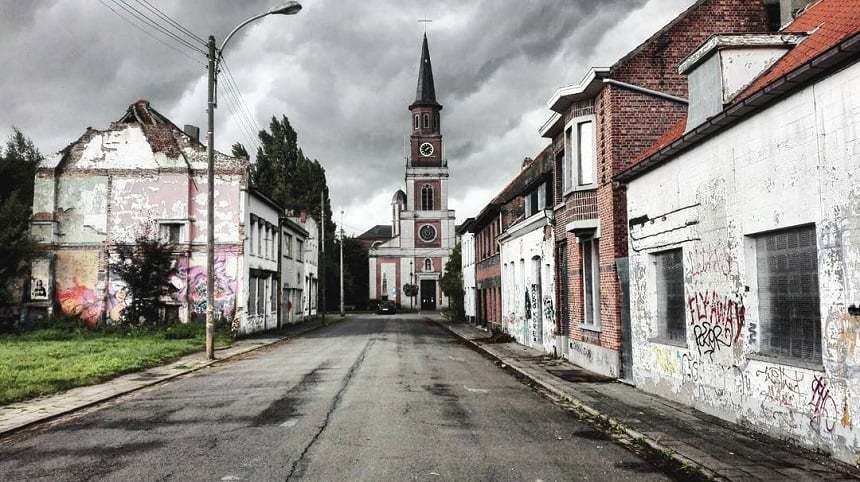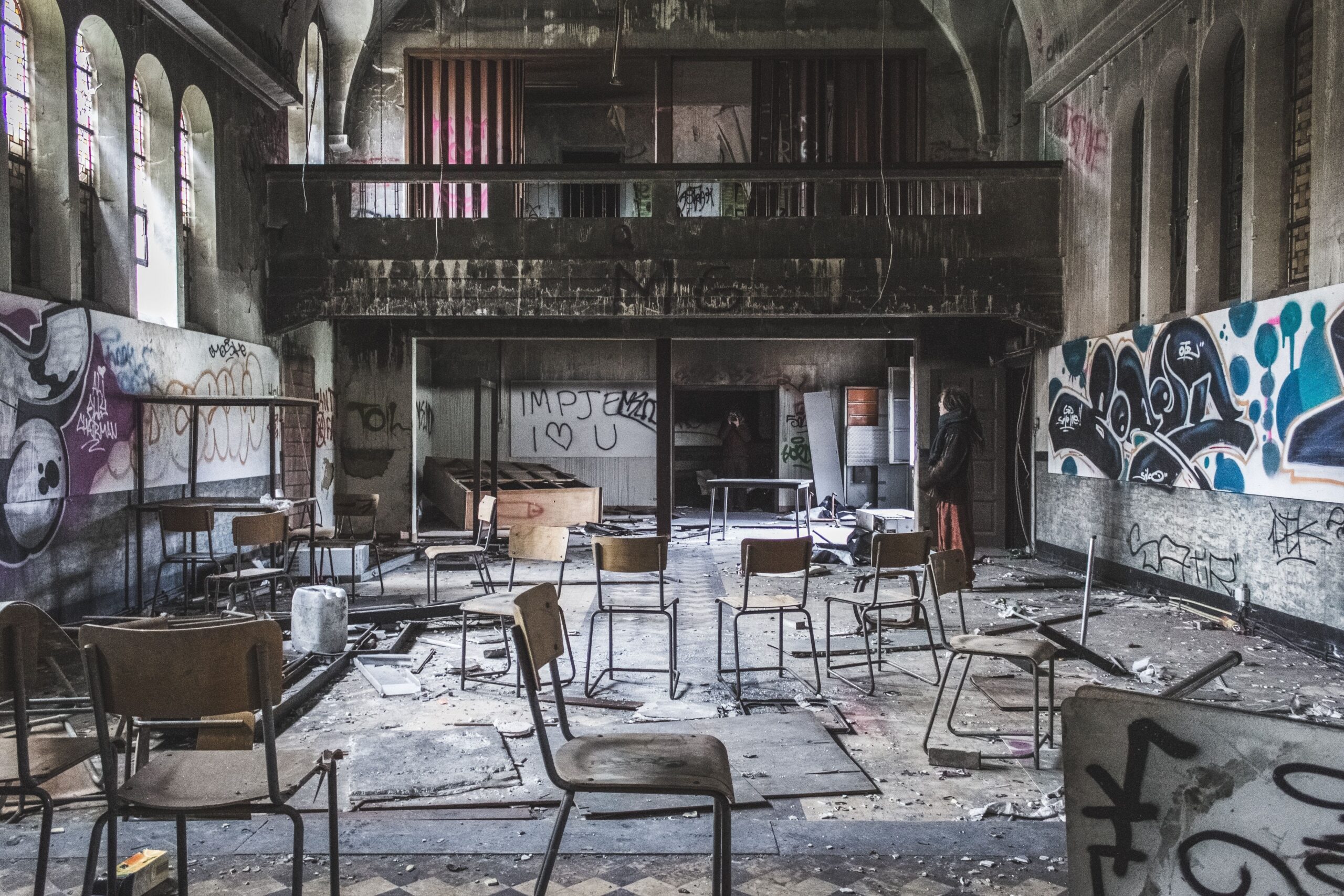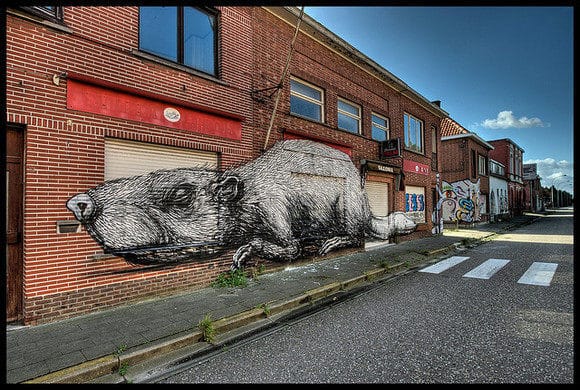Derek Blyth takes you on micro adventures to L-Spots, hidden and exciting places in the Low Countries. This week he ends up in a deserted village that refuses to die.
It’s almost a ghost town, but Doel still has about 20 residents. It can’t be easy living there. This deserted village north of Antwerp, which once had 1,300 inhabitants, stands on the banks of the River Scheldt, next to an ageing nuclear power plant. No one lives here now apart from a few old residents who refuse to move and a handful of radical young settlers.

The houses were due to be demolished in the 1960s to allow construction of a new dock for container ships, but then the plan was put on hold. Most residents have now left, leaving behind abandoned houses, an empty church and a little harbour. The deserted village eventually became a favourite location for street artists, including ROA and Bué the Warrior. It attracts a few tourists, photographers and urbanists. I even once saw a young couple posing for wedding photographs.

© Echo Grid
It used to seem as if Doel was doomed. But then in the winter of 2018 the Flemish government modified the original port project, putting a bend in the new dock, so Doel could be saved. Smart thinking. The boomerang plan – named after the shape of the dock – could change everything. Now there is a bold plan to revive the town.
 Street artist Roa
Street artist RoaLaunched in early 2019, Plan Doelland was drawn up by a group of architecture students from KU Leuven University. The plan involves building a protective wall around the abandoned village, constructing sustainable houses for more than 2,000 new residents and adding a tourist information point. With the right planning, Doel could be transformed from a deserted village into a dynamic village, they argue.
No one knows if it will ever happen, but Doel feels like a place that refuses to die.












